North America Hair Care Market Size
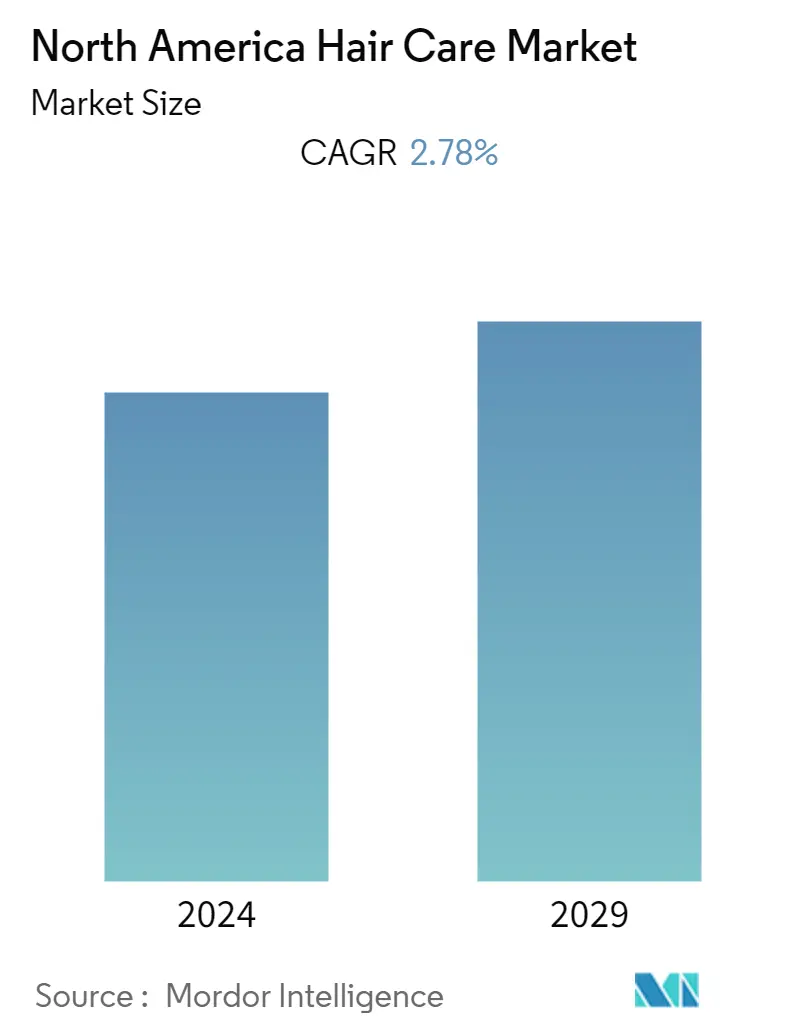
| Study Period | 2019 - 2029 |
| Base Year For Estimation | 2023 |
| Forecast Data Period | 2024 - 2029 |
| Historical Data Period | 2019 - 2022 |
| CAGR | 2.78 % |
| Market Concentration | Low |
Major Players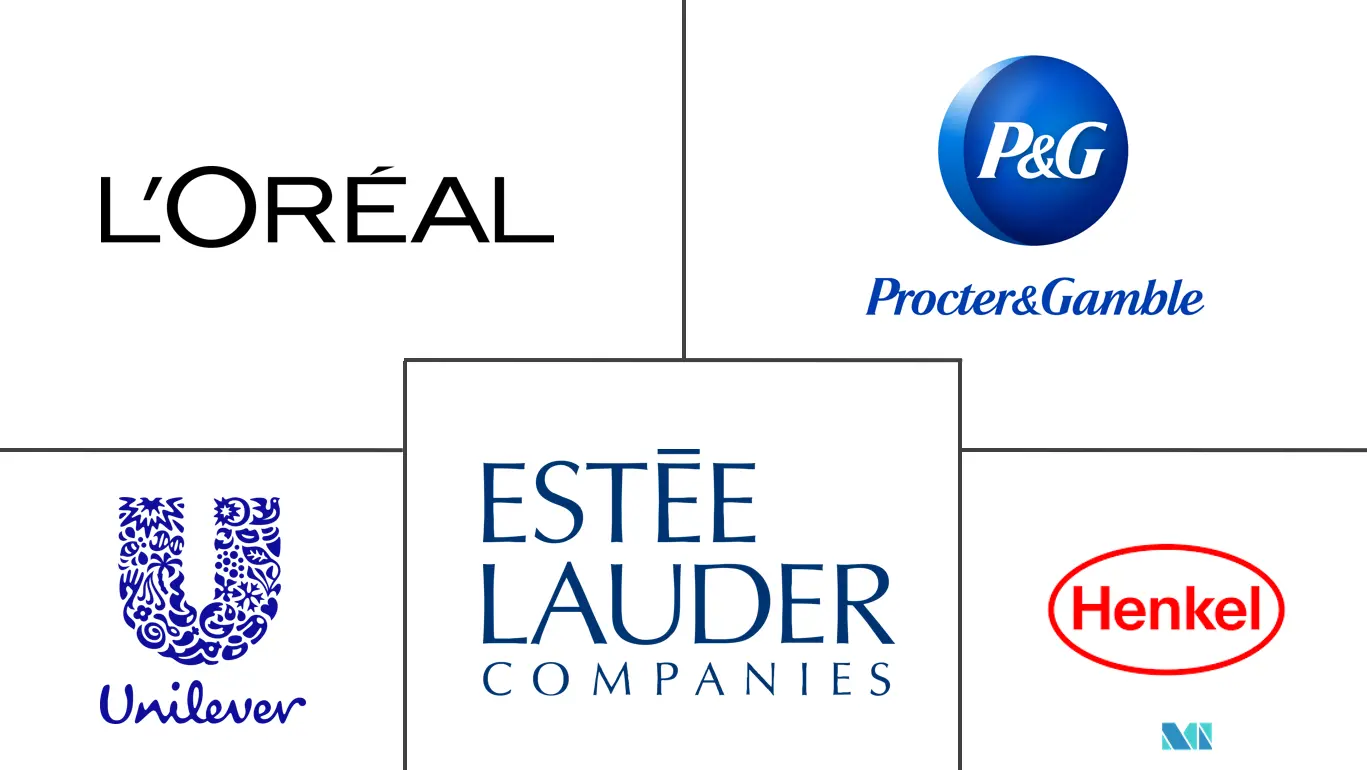
*Disclaimer: Major Players sorted in no particular order |
North America Hair Care Market Analysis
The North American Hair Care Market is poised to witness a CAGR of 2.78% during the forecast period.
Hair care products have been able to capture the consumer's eye in the personal care products industry, as hair is considered a signifier of beauty. With a greater number of consumers, especially men, who are becoming conscious about their physical appearance and want to adopt natural and traditional measures for hair enrichment and smoothening, the hair care market is set to grow across the region. Due to the large retail space and convenient conventional services, specialty stores and supermarkets/ hypermarkets remained the most preferred points of sale of hair care products in the region studied. With the increasing trend toward e-commerce, online retailing is also emerging as a strong distribution channel in the sales of the market studied, and it is expected to grow at a significant rate during the forecast period.
The North American hair care market witnessed an increasing demand for natural and organic products due to the rise in consumer awareness about the harmful effects of certain compounds, such as paraben and aluminum compounds, present in hair care products. A high percentage of consumers choose one brand over others based on its natural formulation. This enhanced the demand for safe, natural, and organic hair care products in recent times. For instance, in September 2022, in the United States and Canada, Back of Bottle (BOB) introduced a new range of luxurious, clean, and sustainable hair care products. The line includes 26 innovative, green-powered, and high-performance products, from hair care treatments to stylers, all created with nourishing ingredients like pequi oil, bayberry fruit, pracaxi oil, red clover flower, Amazonian white clay, jojoba, moringa seed, and avocado.
North America Hair Care Market Trends
Growing Influence of Social Media and Impact of Digital Technology on the Market
The emergence of evolving technologies, such as smartphones, personal computers, the internet, e-commerce, social media, communication strategies, and marketing campaigns, have changed the landscape of the region's personal care products market. The players operating in the market have been using influencer marketing on social media to influence customers and encourage advertisers and marketing practitioners to shift their brand conversations in the digital space. Social media has become an increasingly important platform for brands to showcase their products. Social media posts can reach a wide range of potential customers across the country and generate buzz, particularly in the beauty and personal care industry. Leading brands such as L'Oréal, Unilever, and Estée Lauder, among others, have been turning to Facebook, Instagram, and YouTube to promote product launches and engage their consumers with tutorials and promotional campaigns.
Additionally, social media platforms have also helped expand the reach of smaller companies or start-up brands which lack large marketing budgets or, in some cases, even an offline presence. These brands have also been focused on sharing their narrative and ideology, along with a detailed description of the ingredients used in their products and their sources, with potential consumers to create a sense of transparency and awareness, which in turn helps attract a more extensive consumer base. Consumers are more likely to discover new brands or products via advertisements and updates on brands' social media pages on platforms including Facebook and Twitter. Furthermore, beauty and personal care product consumers tend to take into consideration product reviews and other consumers' opinions in the form of recommendations, comments on social media, posts from expert bloggers, or celebrity endorsements before making their purchase decision. Thus, the growing influence of social media coupled with digital technological advancements has been further augmenting the growth of the market over the review period.
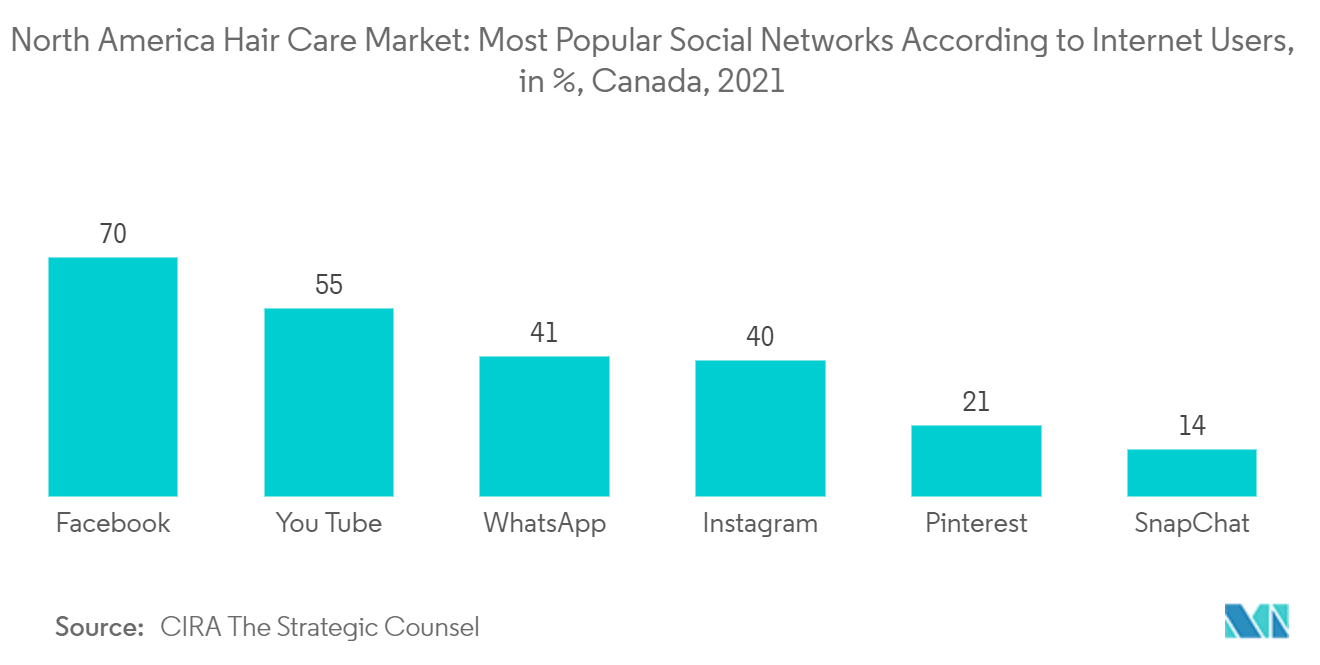
United States Occupies the Largest Share of the Market
The US hair care market is experiencing an escalating pull by the availability and affordability of hair care products, such as shampoos, conditioners, oils, and sprays, leading to the enhanced spending pattern in the hair care market. Furthermore, the market witnessed an increasing number of millennials experiencing hair problems, like hair fall and dandruff, owing to changing lifestyle patterns, along with an increase in stress levels among the working-class women population, which is expected to boost the demand for these products in the forecast period.
In response to the rising expenditure on hair care products, the players operating in the market are following various strategies, like product innovation, expansion, and promotional investments, to occupy the market share. The shift in consumer preferences and discretionary spending on hair care products by consumers are encouraging manufacturers to bring product innovations in terms of packaging to boost the market demand. Products, such as treatment oils for hair loss protection, imparting shine, and decreasing frizz, are available in dropper packaging for dosing and precise application. Companies also started offering travel-size packaging, such as sachets, deluxe samples, and mini bottles, for convenience and portability, which helps drive the market studied. For instance, in September 2022, Epres launched a new product, Olaplex, for bond repair for heat-damaged hair.
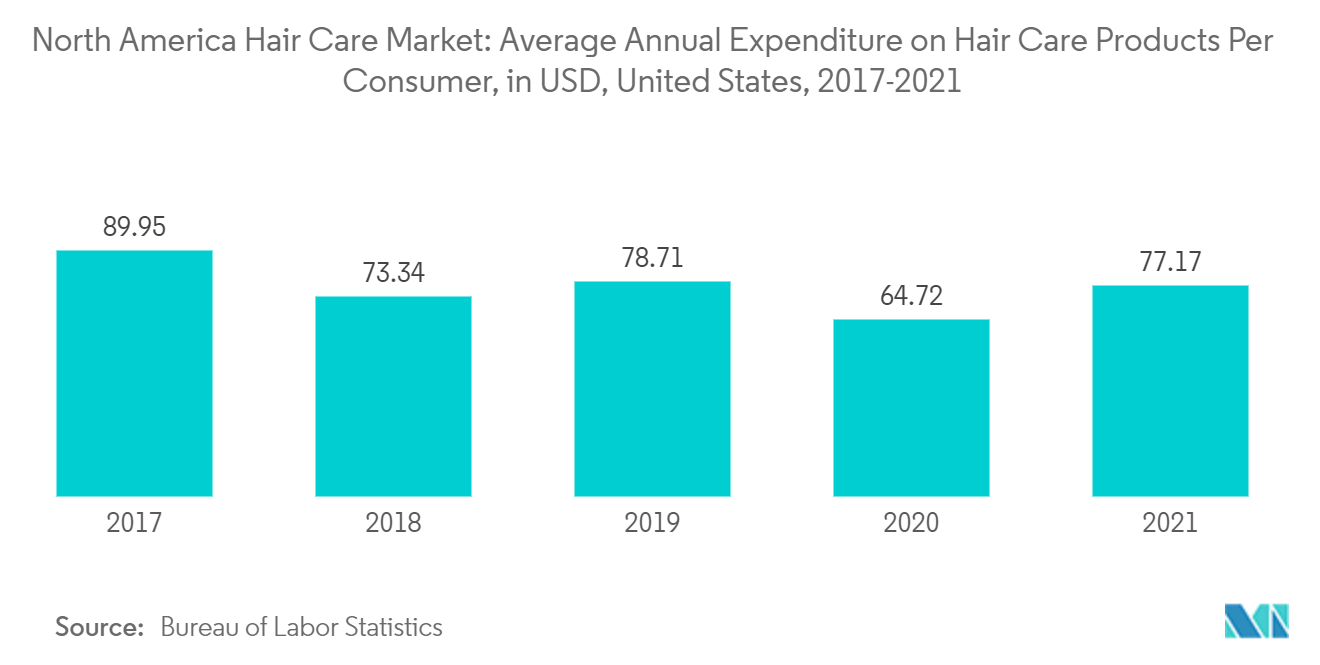
North America Hair Care Industry Overview
The North American hair care market is highly competitive in nature, with the presence of key players, including Procter & Gamble Company, L'Oreal SA, Unilever PLC, The Estee Lauder Companies Inc., and Henkel AG & Co. KGaA. Companies are increasing their investments in research and development and marketing and expanding their distribution channels to maintain their position in the market. The key strategies adopted by the players include product innovations, expansions, and mergers and acquisitions. In September 2021, L'Oréal filed a patent on its natural sugar-based curly hair styling formula. An international beauty major, the company developed a hair styling formulation for curly hair from a blend of sugar compounds and plant fiber, offering a natural and lightweight alternative to film-forming polymer and silicone products.
North America Hair Care Market Leaders
-
Procter & Gamble Company
-
L'Oreal S.A.
-
Unilever PLC
-
Henkel AG & Co., KGaA
-
The Estee Lauder Companies Inc.
*Disclaimer: Major Players sorted in no particular order
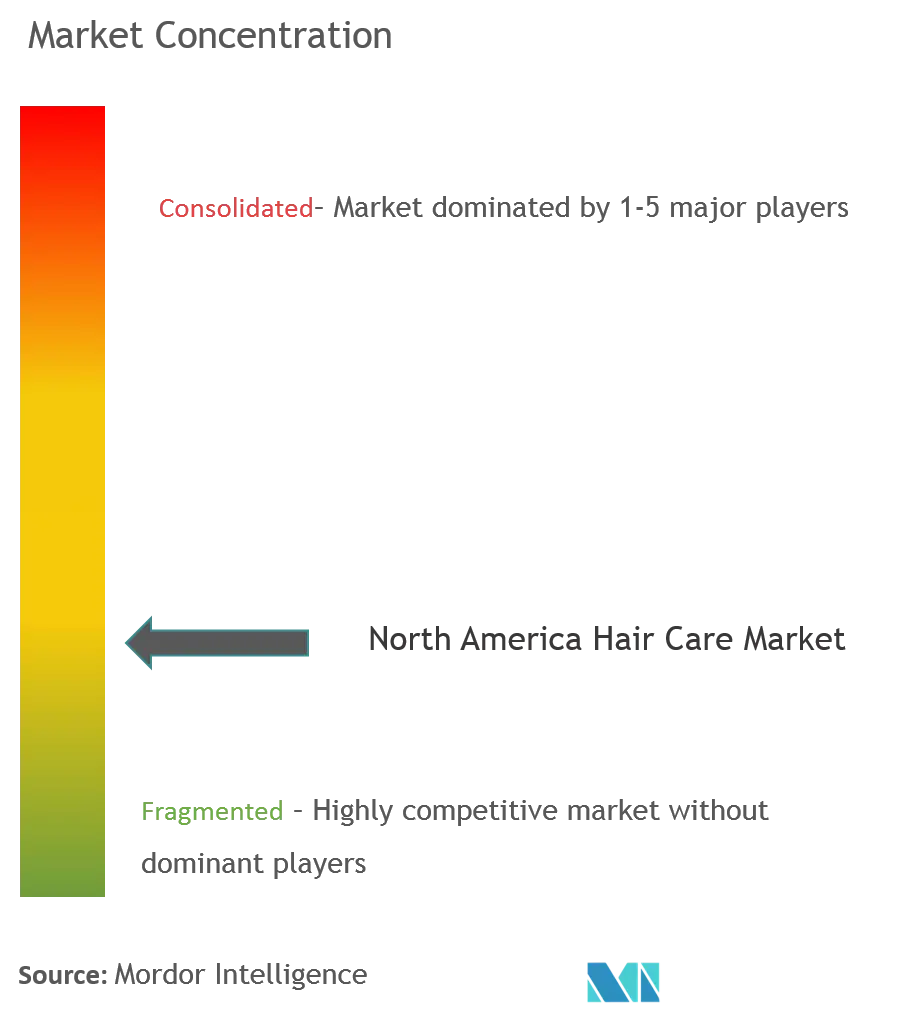
North America Hair Care Market News
- Dec 2022: P&G's Ouai improved its anti-dandruff shampoo category with the new launch, Ouai's Anti-Dandruff Shampoo, which contains an FDA-approved ingredient such as 2% salicylic acid formulated to relieve dandruff symptoms and break down dandruff-causing bacteria to soothe the scalp. It debuted on the Sephora App and will appear on Sephora's and Ouai's websites.
- Sept 2022: Estée Lauder's The Ordinary launched haircare for the skinification of hair, which included products ingredients such as sulfate 4% cleanser for hair and body, behentrimonium chloride 2% conditioner pH, and natural moisturizing factors +HA scalp treatment.
- Aug 2021: Garnier, a subsidiary of L'Oréal, introduced Whole Blends Shampoo Bars in the United States. The launch is a part of the company's larger sustainability strategy and is made with formulations that use less water than their liquid equivalents and no plastic packaging. The solid shampoo bars are made with 94% plant-based ingredients and are devoid of dyes, preservatives, silicones, and soap.
North America Hair Care Market Report - Table of Contents
1. INTRODUCTION
- 1.1 Study Deliverables & Study Assumptions
- 1.2 Scope of the Study
2. RESEARCH METHODOLOGY
3. EXECUTIVE SUMMARY
4. MARKET DYNAMICS
- 4.1 Market Drivers
- 4.2 Market Restraints
-
4.3 Porter's Five Forces Analysis
- 4.3.1 Threat of New Entrants
- 4.3.2 Bargaining Power of Buyers/Consumers
- 4.3.3 Bargaining Power of Suppliers
- 4.3.4 Threat of Substitute Products
- 4.3.5 Intensity of Competitive Rivalry
5. MARKET SEGMENTATION
-
5.1 Product Type
- 5.1.1 Shampoo
- 5.1.2 Conditioner
- 5.1.3 Hair Loss Treatment Products
- 5.1.4 Hair Styling Products
- 5.1.5 Perms and Relaxants
- 5.1.6 Hair Colorants
- 5.1.7 Other Product Types
-
5.2 Distribution channel
- 5.2.1 Supermarkets/Hypermarkets
- 5.2.2 Convenience Stores
- 5.2.3 Specialty Stores
- 5.2.4 Pharmacies/Drug Stores
- 5.2.5 Online Retail Stores
- 5.2.6 Other Distribution Channels
-
5.3 Geography
- 5.3.1 United States
- 5.3.2 Canada
- 5.3.3 Mexico
- 5.3.4 Rest of North America
6. COMPETITIVE LANDSCAPE
- 6.1 Most Adopted Strategies
- 6.2 Market Share Analysis
-
6.3 Company Profiles
- 6.3.1 Procter & Gamble Company
- 6.3.2 L'Oreal S.A.
- 6.3.3 Unilever PLC
- 6.3.4 Shiseido Company, Limited
- 6.3.5 Henkel AG & Co., KGaA
- 6.3.6 Natura & Co
- 6.3.7 Kao Corporation
- 6.3.8 The Estee Lauder Companies Inc.
- 6.3.9 John Paul Mitchell Systems
- 6.3.10 Alticor (Amway Corporation)
- *List Not Exhaustive
7. MARKET OPPORTUNITIES AND FUTURE TRENDS
** Subject To AvailablityNorth America Hair Care Industry Segmentation
Hair care is an overall term for hygiene and cosmetology involving hair. Hair care routines differ according to an individual's culture and the physical characteristics of one's hair.
The North American Hair Care Market is Segmented by Product Type (Shampoo, Conditioner, Hair Loss Treatment Products, Hair Colorants, Hair Styling Products, Perms and Relaxants, and Other Product Types), Distribution Channel (Supermarket/Hypermarket, Convenience Stores, Specialty Stores, Pharmacies/ Drug Stores, Online Retail Stores, and Other Distribution Channels), and Country (United States, Canada, Mexico, and Rest of North America). The report offers market size and values in (USD Million) during the forecast years for the above segments.
| Product Type | Shampoo |
| Conditioner | |
| Hair Loss Treatment Products | |
| Hair Styling Products | |
| Perms and Relaxants | |
| Hair Colorants | |
| Other Product Types | |
| Distribution channel | Supermarkets/Hypermarkets |
| Convenience Stores | |
| Specialty Stores | |
| Pharmacies/Drug Stores | |
| Online Retail Stores | |
| Other Distribution Channels | |
| Geography | United States |
| Canada | |
| Mexico | |
| Rest of North America |
North America Hair Care Market Research FAQs
What is the current North America Hair Care Market size?
The North America Hair Care Market is projected to register a CAGR of 2.78% during the forecast period (2024-2029)
Who are the key players in North America Hair Care Market?
Procter & Gamble Company, L'Oreal S.A., Unilever PLC, Henkel AG & Co., KGaA and The Estee Lauder Companies Inc. are the major companies operating in the North America Hair Care Market.
What years does this North America Hair Care Market cover?
The report covers the North America Hair Care Market historical market size for years: 2019, 2020, 2021, 2022 and 2023. The report also forecasts the North America Hair Care Market size for years: 2024, 2025, 2026, 2027, 2028 and 2029.
North American Hair Care Industry Report
Statistics for the 2024 North American Hair Care market share, size and revenue growth rate, created by Mordor Intelligence™ Industry Reports. North American Hair Care analysis includes a market forecast outlook to 2029 and historical overview. Get a sample of this industry analysis as a free report PDF download.



